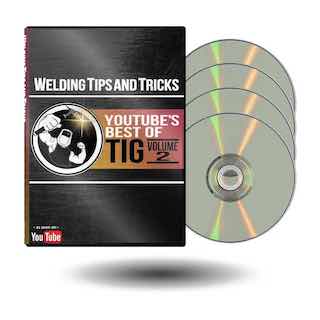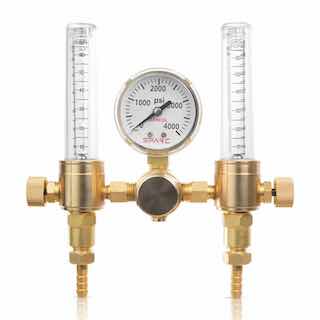HTP Tig Welder Settings
This week I am using an HTP tig welder. It is the Invertig 221H model AC DC tig welder and one of the settings on this TIG welder is AC frequency.
AC frequency is adjustable on many tig inverters but there is very
little information on where to set the AC frequency for different jobs.
So hopefully, this video will shed some light on that.
First of all, one of the main benefits of having an inverter like this HTP Tig welder is AC frequency adjustment.
In the past, we were stuck with 50 or 60 hz. It seemed fine and we made it work.
But now we can adjust AC frequencies all the way up to 5000hz on some tig welders. ( like the Miller Dynasty 350)
Why would anyone want to tig weld aluminum at 5000hz?
Frequencies like 5000hz may seem unnecessary for the average user but
there are segments of the welding industry like tube mills that are
discovering that increased AC frequency translates directly into
increased travel speed....and that means increased production. and that
means more $$$$$.
Most welders like you and me will never have the need to tig weld with
frequencies of 5000hz. And besides, the high pitch whine at high frequencies like that is very annoying.
But I do adjust the AC frequency setting on every inverter I use. ...I
routinely use ac frequency settings as high as 150hz when I need to
focus the arc. And I have talked with many welders who see benefits up
to around 400hz.
But at 400hz, things can start happening to your tungsten that are hard to explain.
You really need good quality tungsten at 400hz.
For this Video, I started out welding one inch thick ( 25mm) aluminum
with a setting of 50hz on the HTP Tig welder, because a low frequency
like 50hz actually puts more heat into a thick part. If you think about
it , it makes total sense. More time is spent on the negative and
positive currents and less time is spent switching back and forth.
Next, 60hz was used for overlay type beads that would be used in build
up of castings or worn parts. 60hz is what I am accustomed to from all
those years of welding with transformer style machines. It worked just
fine way back when...and still works.
For welds like an edge weld on a piece of .125" (3mm) piece, you can
benefit from a more focused arc. So 100hz is a good choice for those
types of welds. I also set the AC balance to 60%en to allow for plenty
of cleaning action so that the puddle would wet out and flow clean at a
minimal heat.
But stepping down to thinner material like .063" (1.6mm) thickness, a
setting of 120hz worked great along with dropping down to a 1/16"
(1.6mm) electrode.
The last application was a fillet weld on a Tee joint in .063" (1.6mm)
thick aluminum. This joint is difficult. Its hard to maintain a small
weld while getting the puddle to fuse into the root.
A setting of 150 hz helped in pinpointing the arc so that I could drive the molten puddle down into the root of the joint.
So there are a few practical applications for setting AC frequency .
a recap:
- one inch thick (25mm thick ) metal with no preheat worked well with 50 hz
- overlay or build up beads that need to wet in nicely will work with 60hz
- .125" (3mm) edge welds where a focussed arc helps will work at 100hz
- .063" (1.6mm) edge welds where an even more focussed arc helps will work at 120hz
- .063" (1.6mm) tee joint fillet weld works great at 150hz
This HTP Tig welder also has some unique settings that are usually found only on higher priced machines.
See more on HTP Tig welder settings
more on all types of Tig Welding













